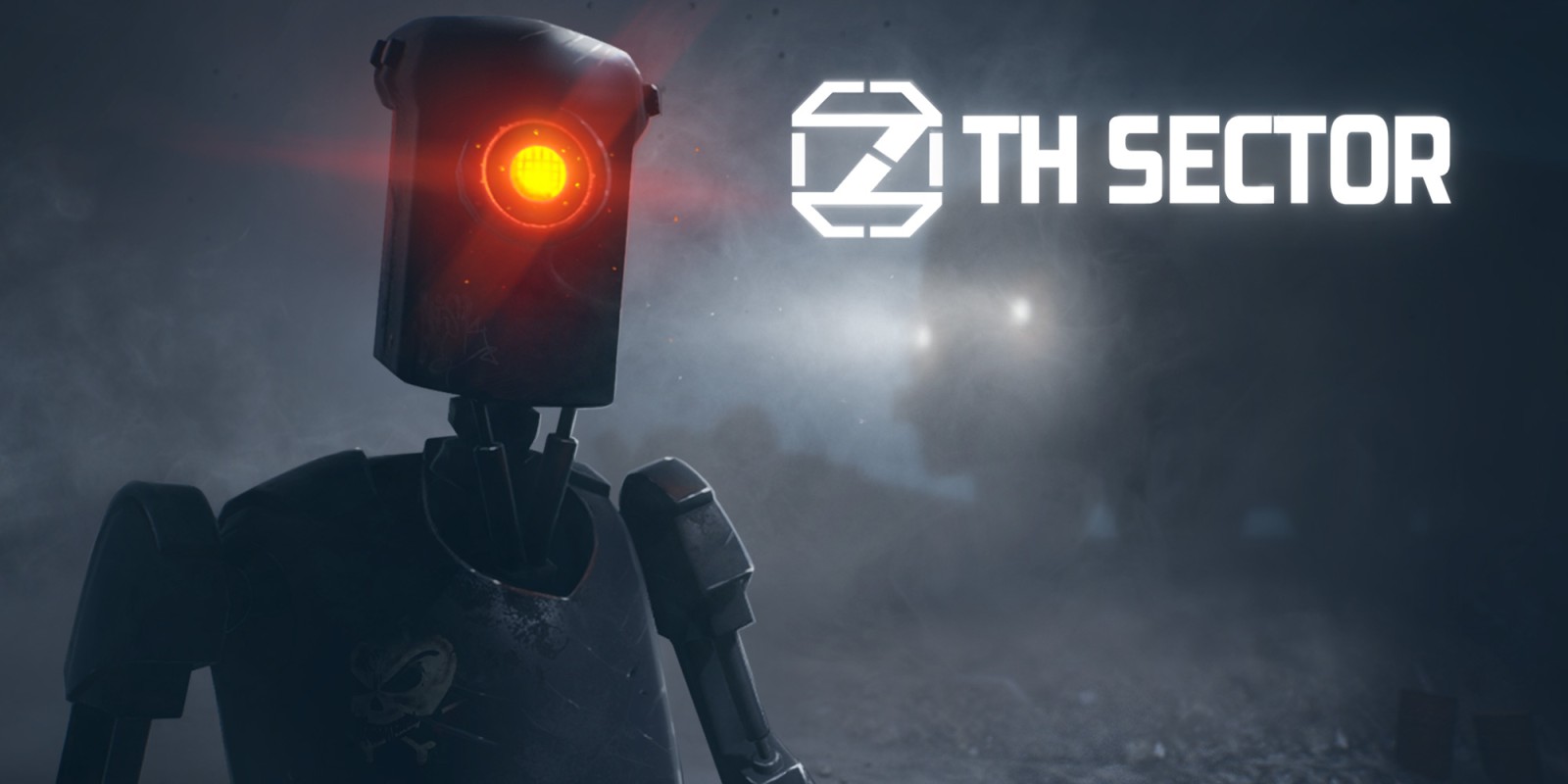[Review]: 7th Sector – Nintendo Switch

7th Sector – Nintendo Switch
Developed By: Sergey Noskov/Sometimes You
Published By: Sometimes You
Category: Puzzle Adventure
Release Date: February 05, 2020
Many versions of our potential future are painted as dystopian and with good reason, as utopias are usually not as interesting with no drama and conflict. An oft cited visual influence is the much-cherished Blade Runner, which depicts a future where we live in an oppressive society ruled by large corporations. 7th Sector dials this up a notch as you spend much of your time in the shadows, aiming to go unnoticed by the oppressive regime that is looking for you.
7th Sector is the work of Russian developer and publisher team Sergey Noskov and Sometimes You. This 2.5D puzzle adventure starts with you stuck inside an old CRT TV, appearing on screen in a sea of static. You manage to escape via an electric cable and become an electric current, travelling down a network of cables. As you travel through buildings and across alleyways, pipes hiss at you as you move past them, like a crowd supporting the other team, willing you to fail. Certainly in this initial section there is little danger of that, more on that later.
The first section of the game is like a diorama with you merely passing through as you travel along cables. In the background is a living breathing world packed with detail which can appear for only a moment as you zip through it. You travel through city environments with large neon signage adorning the cityscape, residents looking out their windows with helicopters surveying the smog-filled city from the sky. In closer environments you catch a glimpse of a man hunched over computer monitors before he closes the door. Later you pass through large factories with machinery running to its routine while you attempt to pass by unnoticed. This all takes place in the background with you as an observer from the foreground. The visuals are quite accomplished with nice lighting, reflections and depth of field effects which helps build a believable world, and everything runs smoothly in handheld and docked modes.
Initially you are travelling down cables but eventually you reach a point where you must transfer yourself to a host to continue your journey. Like a virus, you inhabit a host while looking for your next host to progress. Remote control cars, spherical robots, flying robots, all in your quest to be reunited with your original self, with a number of environmental puzzles to solve standing in your way. Each host plays differently with puzzles calling on you to utilise your host attributes and the environment to progress.
Slow and methodical puzzles are interspersed with puzzles including stealth sections and shoot-em up sections. There are sections when you are attempting to hide from heavily armed robots that look like something out of Robocop. Then later you get to pilot a robot with guns and be the aggressor. However the range of puzzles is such that other puzzles may require you to stop and get out a pen and paper to solve an algebra equation (who said algebra had no application outside of the classroom!).
The story is not integral to the experience but there is one there if you’re prepared to seek out and decipher it. There is no dialogue as such or cutscenes so the story is told using the environment, and often through details in the background. In one area a propaganda poster on the wall shows a robot standing over a man with the headline ‘YOUR PROTECTION’. In a nod to Metroid Prime you can optionally scan certain terminals to receive photographs which provide further meaning. There are multiple endings and your ending will depend on a number of factors such as completing some optional puzzles, or completing certain sections in a particular way.
7th Sector pays homage to Playdead’s acclaimed Limbo and Inside with it’s own trial and death mechanics. Employed in a similar way are checkpoints which also act as save points and are arranged widely throughout so there aren’t many sections that require you to retread old ground. Yet here is where the similarities end as there are a number of pacing and balancing issues in its puzzle design which stop it from reaching the heights of these two classics.
The pacing and puzzles of the first section are fairly moderate and don’t sufficiently prepare you for the rest of 7th Sector. The trial and death mechanics are introduced after you’ve completed many maths and logic based puzzles at your own pace, then suddenly you’re getting rushed to solve puzzles so your character doesn’t die which feels at odds with the experience you’ve had to this point.
The problems continue where you encounter puzzles which require new controls and abilities without being told what they are. This is frustrating on it’s own, but is compounded in some puzzles where you are killed multiple times while trying to work out what the puzzle is and as a result it feels like cheap kills. At times it means when new gameplay elements are introduced without guidance it feels unfair and not fun. This frustration continues in some other puzzles that are made more difficult due to the requirement for pixel perfect precision, which is demanding too much of the Switch controller. The blend of slower paced methodical puzzles and trial and death puzzles is jarring and as a result it may cause some casual puzzle game players to leave and never return.
What this leaves us with is a game puzzle game diehards may enjoy but many will feel stung by some of its puzzle design and sudden difficulty spikes. It’s unfortunate that the goodwill generated by the inventiveness of some puzzles is later extinguished by unreasonable puzzles. We all deserve to be set up for success, even in a dystopia.
3/5





Buy 7th Sector
Be sure to follow Sometimes You







![[Review] Hoplegs – Nintendo Switch](https://theswitcheffect.net/wp-content/uploads/2021/12/IMG_20211219_203344.jpg)
![[Review] Code Shifter – Nintendo Switch](https://theswitcheffect.net/wp-content/uploads/2020/03/Code-Shifter-Title.jpg)
![[Review] Quench – Nintendo Switch](https://theswitcheffect.net/wp-content/uploads/2019/08/Quench-Featured.jpg)